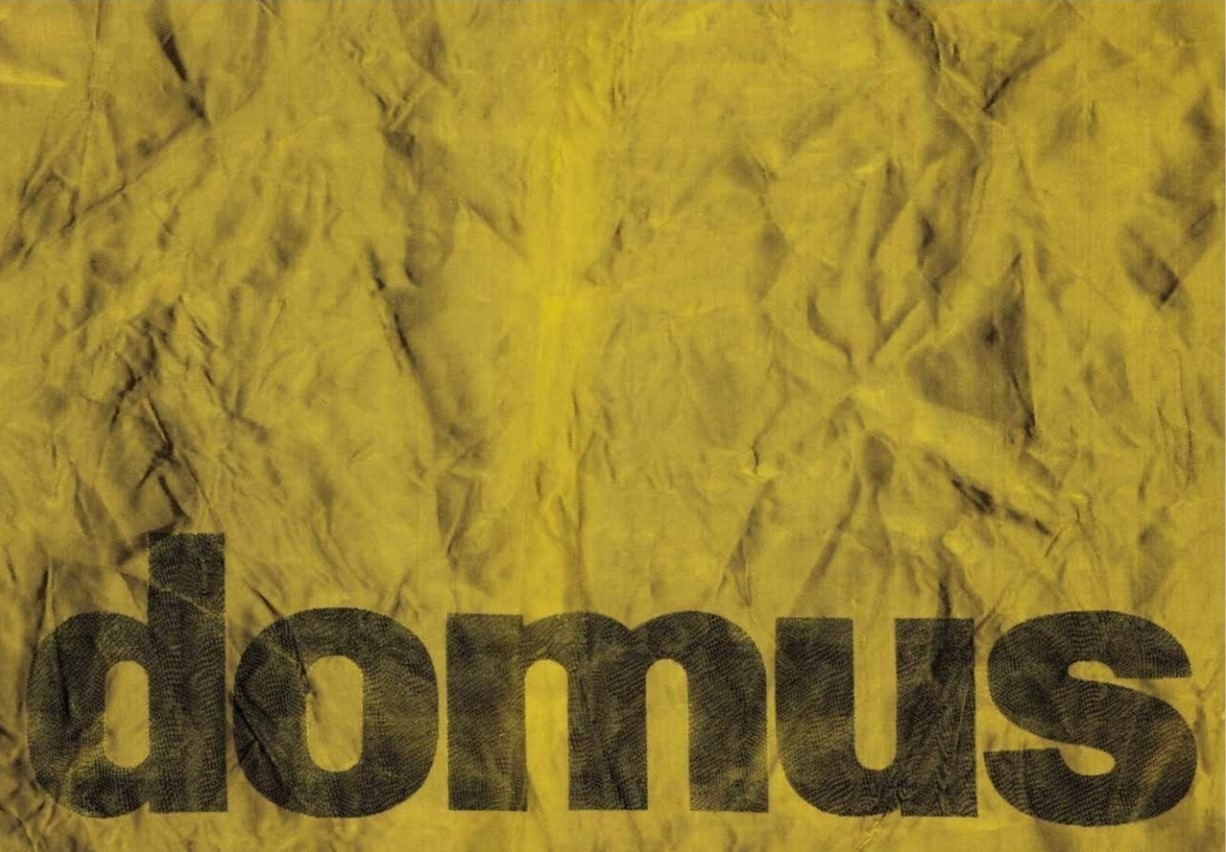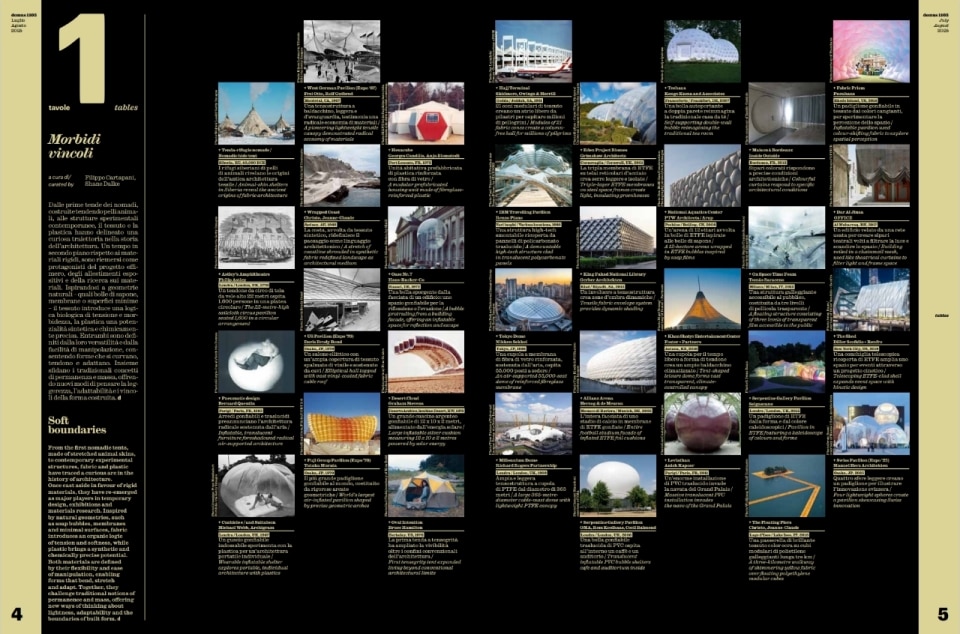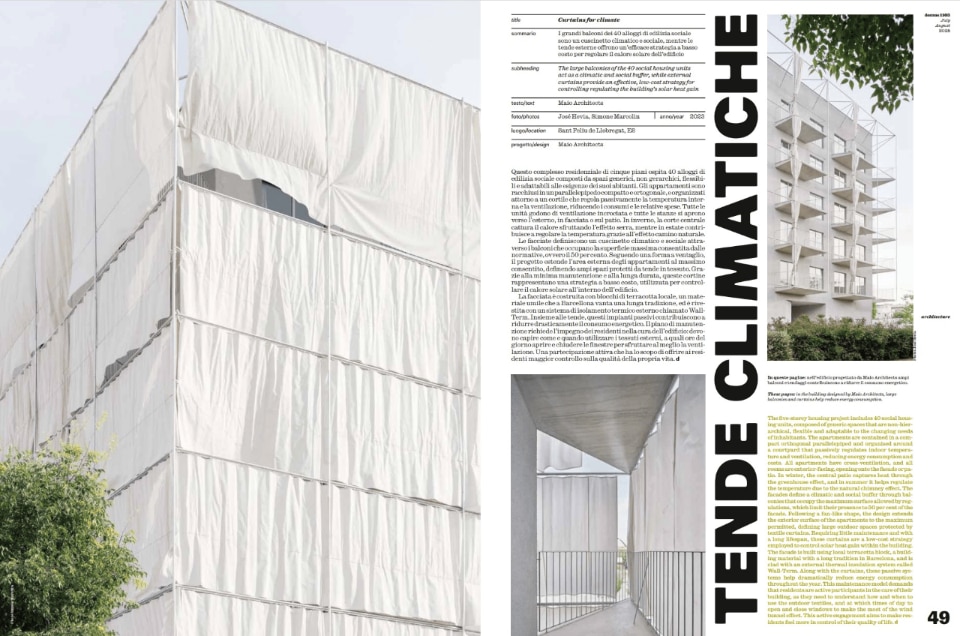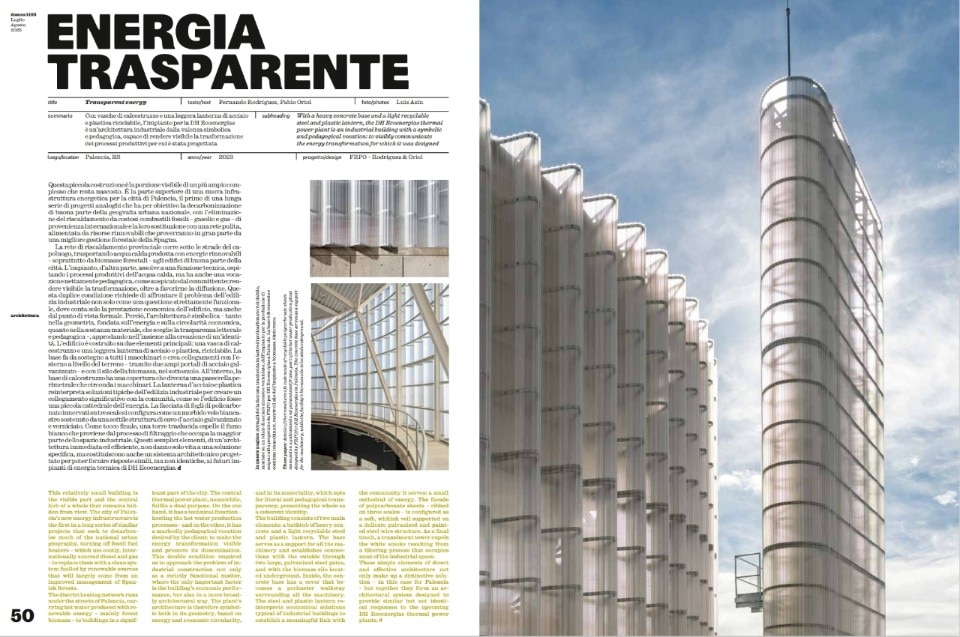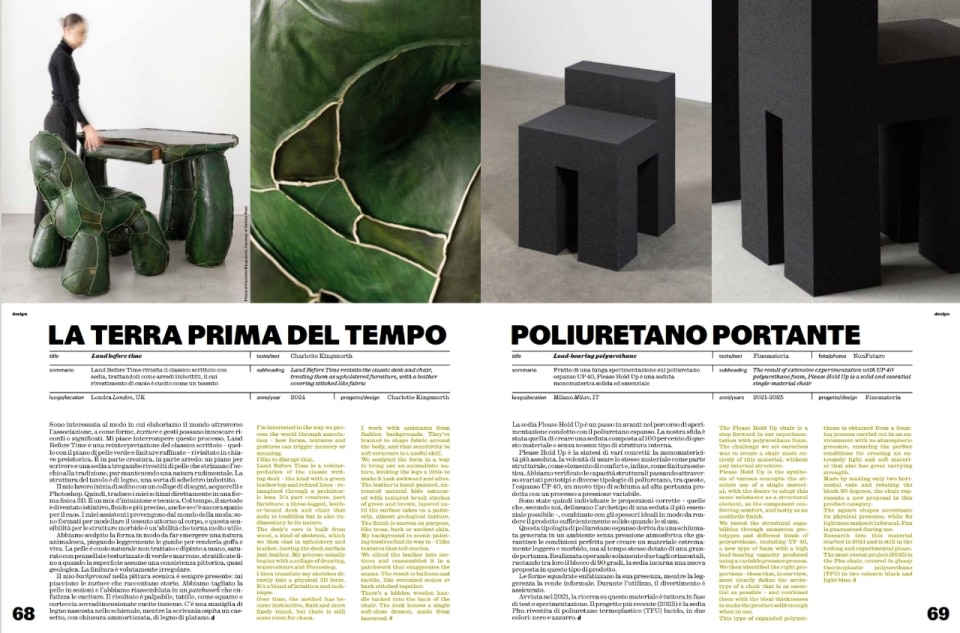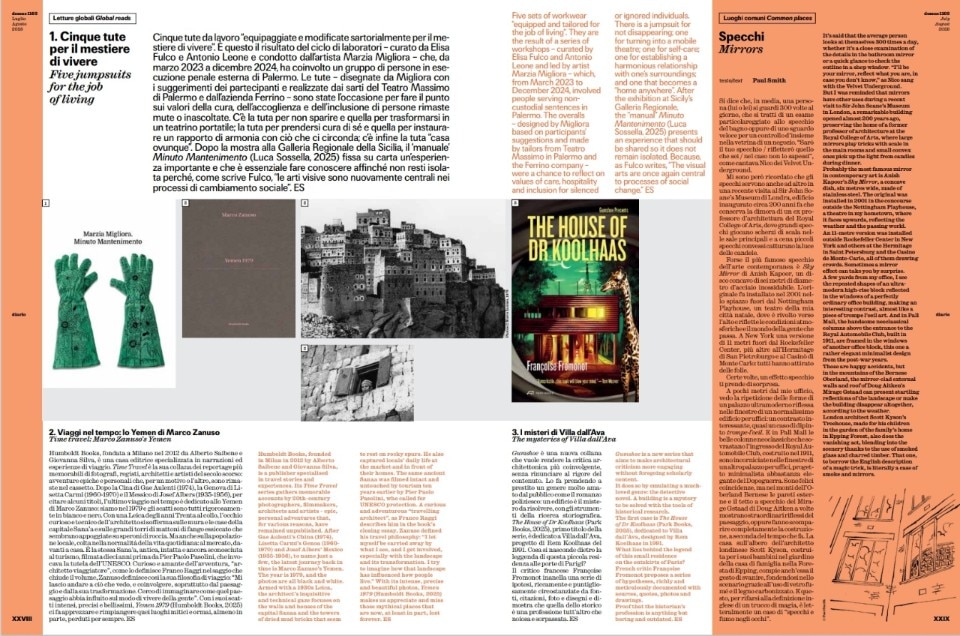The July-August 2025 double issue of Domus is dedicated to two distinct materials: "Fabric and Plastic." These two dimensions fundamentally shape our world, revealing their hidden essences and unexpected connections. Bjarke Ingels, the 2025 Guest Editor, paints a vivid picture in his editorial of the dichotomy between plastic—dubbed the 20th century's "enfant terrible" for its promises of a lightweight future and innovative applications (like the inflatable domes of Biosphere 2 and Lego bricks, embodying "aesthetic sustainability")—and its simultaneous status as a symbol of waste and pollution.
Fabric, on the other hand, emerges as the elegant, understated counterpart, the silent support of architecture, from iconic figures like Lilly Reich and Mies van der Rohe, to Frei Otto's tensile structures for the 1972 Munich Olympics, to SOM's monumental Hajj Terminal in Jeddah from '81, and even Ingels' bold explorations with inflatables like The Orb at Burning Man and the 2016 Serpentine Pavilion.
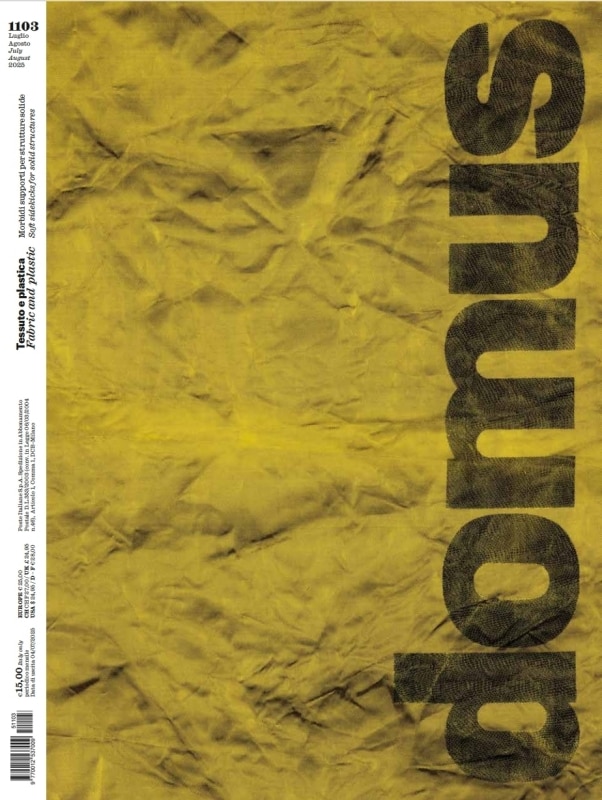
Delving into the nature of these materials, Alejandro Zaera-Polo kicks things off with an overview of "The Politics of Plastic," revealing how this material, originally developed for military purposes, permeated post-war daily life (from Tupperware to Barbie dolls). Zaera-Polo explores the paradox of a material that, while offering freedom and lightness, often succumbed to an "atetonicty" that masked its architectural potential. He also discusses the "Sick Building Syndrome" (SBS) caused by the non-breathability of plastics, while acknowledging their virtues in the "World of Greenhouses," where polycarbonate, PTFE, and ETFE have revolutionized agriculture and architecture.
In parallel, Filippo Cartapani and Shane Dalke curate the "Tables," a visual guide through the "Soft Constraints" of fabric and plastic, from nomadic tents to contemporary experimental structures. Petra Blaisse enchants us with her reflection on "The Emancipation of the Curtain," recounting how she introduced the idea of movement and change into architecture through textiles, with examples ranging from the Kunsthal in Rotterdam to the Maison à Bordeaux. The journey into the future of materials continues with Nick Tidball, co-founder of Vollebak, who, in "Future of Fabrics," examines the evolution of clothing from animal hides to lab-grown spider silk and atomically engineered materials, foreshadowing fabrics capable of regulating temperature and harvesting energy.
The pages of Domus are filled with visionary projects and architects who challenge the limits of what's possible. In the "Studio Visit," Bjarke Ingels converses with José Selgas and Lucía Cano of Selgascano, who reveal how their affinity for plastic, often dictated by budget, transforms into a deep exploration of tectonic and formal possibilities through the bold use of acrylic and ETFE.
MAD takes us into "Clouds in the Landscape" with the Quzhou Stadium and the Ephemeral Bubble in Japan, exploring how softness and lightness can generate unprecedented forms and new emotional connections. Maio Architects presents "Climate Tents," an innovative residential complex in Sant Feliu de Llobregat where large balconies and external fabric awnings drastically reduce energy consumption.
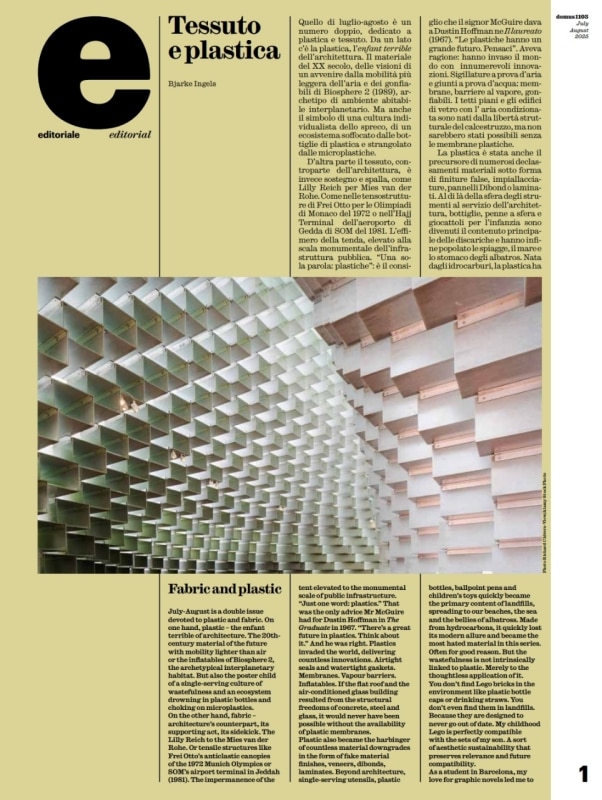
FRPO – Rodríguez & Oriol unveil "Transparent Energy" with the DH Ecoenergías plant in Palencia, a structure that combines a concrete base with a lightweight lantern of steel and recyclable plastic. MVRDV invites us to a "Soft Urban Plaza" with the Mega Mat in Bangkok, a giant modular carpet made of recycled plastic mats. Guillermo Santomà + TEST bring us into "A Space in Cementitious Canvas" with the Gimaguas store in Barcelona, where the ceiling, walls, and floor were clad with in-situ hardened Concrete Canvas.
Finally, Erased Studio presents "Choreographies of Moving Fabric," a wedding reception setup that dynamically transforms the space. The "Portfolio" celebrates the textile epic of Christo and Jeanne-Claude through Wolfgang Volz's evocative photographs, immortalizing monumental works like the Running Fence, the Wrapped Reichstag, and the Floating Piers.
The "Design" section explores the frontiers of furniture and material innovation: Willo Perron presents the "Sausage Sofa," a bold and versatile "playground" of cylindrical modules; Studio Niko Koronis illuminates us with "Light-Capturing Resin" in the BKT table, a "significant step" in resin research; Charlotte Kingsnorth takes us to a "Land Before Time" with a reinterpretation of the classic writing desk covered in hand-painted leather; and Finemateria presents "Load-Bearing Polyurethane" with the Please Hold Up chair, a solid and essential monomaterial seat.
The dialogue between art and space manifests in the "Art" section, where Do Ho Suh introduces us to his "Ghost Architectures" on display at the Tate Modern, works that stitch together rooms from buildings in Seoul, New York, London, and Berlin. The issue concludes with Christoph Niemann's "Oxymoron," reflecting on the "powerful simplicity" of the ordinary Lego brick. The cover, a collaboration with Nick and Steve Tidball of Vollebak, is a copper fabric woven with the laser-etched Domus logo—a Faraday cage that shields the editorial content from electromagnetic waves, a perfect fusion of aesthetics and function.
A counter-order by editorial director Walter Mariotti urges us to look beyond simplistic rankings, like Copenhagen being designated the "most livable city." Mariotti starts from Domus's recent installation in Copenhagen with guest editor Bjarke Ingels, and provocatively asks: "What about all the other cities?" This analysis dissects the parameters of The Economist's research, highlighting how stability—an increasingly precarious factor due to global geopolitical tensions—has become the true deciding factor.
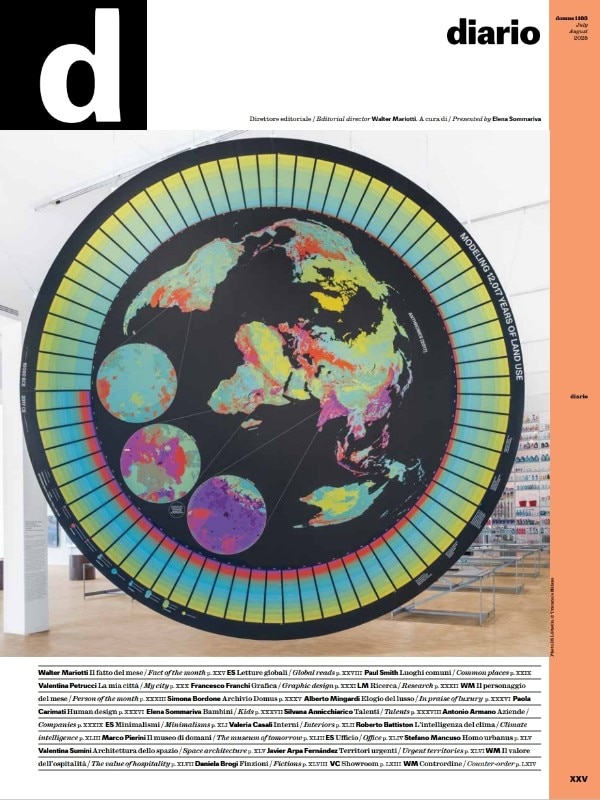
Domus 1103 opens with the "Diary" section, exploring crucial themes of our time. Editorial Director Walter Mariotti introduces the 24th International Exhibition of Triennale Milano, "Inequalities," curated by Triennale President Stefano Boeri alongside 28 other internationally renowned curators (including Norman Foster and Hans Ulrich Obrist). The exhibition tackles growing economic, ethnic, geopolitical, and gender inequalities, with the aim of transforming them into "fertile differences."
The "Global Readings" section presents the "Five Overalls for the Art of Living" project, documenting an inclusion initiative with people serving sentences in Palermo, and "Journeys Through Time: Marco Zanuso's Yemen," a 1979 photographic report published by Humboldt Books celebrating ancient Sana'a. It also analyzes "The House of Dr. Koolhaas," the first title in Park Books' new "Gumshoe" series, which investigates Rem Koolhaas's Villa dall'Ava as a true architectural mystery.
Paul Smith, in "Common Places," reflects on the evocative power of mirrors in art and architecture, citing works like Anish Kapoor's "Sky Mirror." Valentina Petrucci, in "My City," explores the concept of the city as a place of relationships and the importance of sacred architecture according to Luigi Vari, Archbishop of Gaeta. Francesco Franchi, in "Graphics," analyzes Auge Design's innovative design for "Nazionale" liqueurs. Loredana Mascheroni, in "Research," introduces "The Last Pot" collection of cinerary urns by Il Tornitore Matto by Alessi.
The "Personality of the Month" is Dante O. Benini, an eclectic and prolific architect, a student of Carlo Scarpa and Oscar Niemeyer, who shares his design philosophy based on the idea of "exaggerating with heart, mind, and hands" to create emotional spaces. Simona Bordone, in "Domus Archive," traces the history of tourism on Elba Island, comparing the 162 beds in 1940 to the current 40,000, and raises the issue of overtourism.
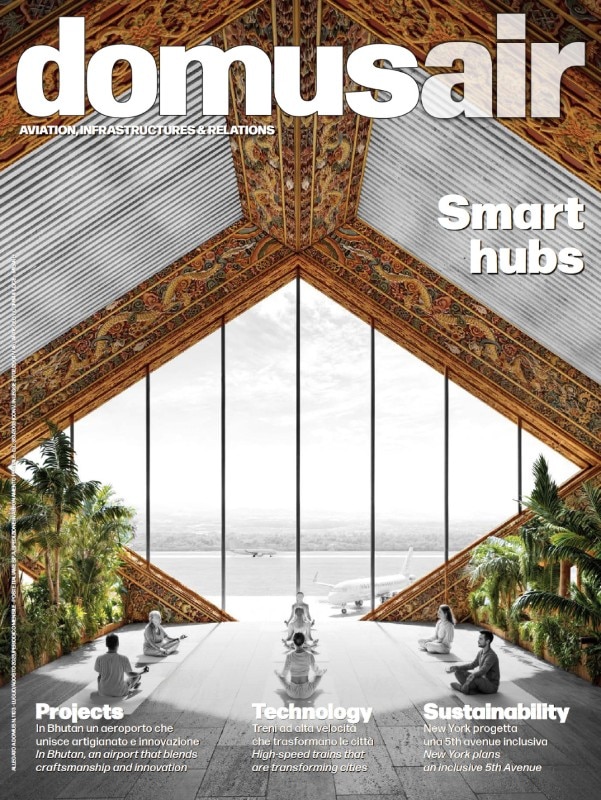
Alberto Mingardi, in "In Praise of Luxury," analyzes the decline of violence in modern societies. Paola Carimati, in "Human Design," discusses the importance of slowing down, a key concept revisited by Byung-Chul Han, and introduces Andrea Botero's work on participatory design. Elena Sommariva, in "Children," celebrates the re-edition of Bruno Munari's nine books from 1945. In "Talents," Silvana Annicchiarico presents Mehari by Davide Biancucci for Campeggi. Antonio Armano, in "Companies," narrates the growth of PLH Italia by Enrico Corelli. Elena Sommariva, in "Minimalisms," dedicates space to Cini Boeri's bag, a 1970s project now produced by Prada in Re-Nylon.
Valeria Casali, in "Interiors," describes the spaces of Sauvage TV in Barcelona, a project by Vania Gaetti that combines exposed concrete and color accents. Roberto Battiston, in "Climate Intelligence," highlights the success of the Montreal Protocol. Marco Pierini, in "The Museum of Tomorrow," reflects on the intimate relationship between observer and artwork. Elena Sommariva, in "Office," presents Alis, the office furniture system by Park Associati for Fantoni. Stefano Mancuso, in "Homo Urbanus," emphasizes how cities are the main contributors to global warming. Valentina Sumini, in "Space Architecture," explores the use of extended reality (XR).
Finally, Javier Arpa Fernández, in "Urgent Territories," launches an appeal to save Malaga from overtourism. Walter Mariotti interviews Simone Giorgi, General Manager of the Park Hyatt Milan, who oversaw a 35-million euro renovation. Daniela Brogi, in "Fictions," analyzes the stylistic peculiarities of Wes Anderson's films, such as "The Phoenician Plot" (2025). A rich, interesting double issue, where current events, architecture, design, art, and economics all tell the story of our time. Happy summer reading!


